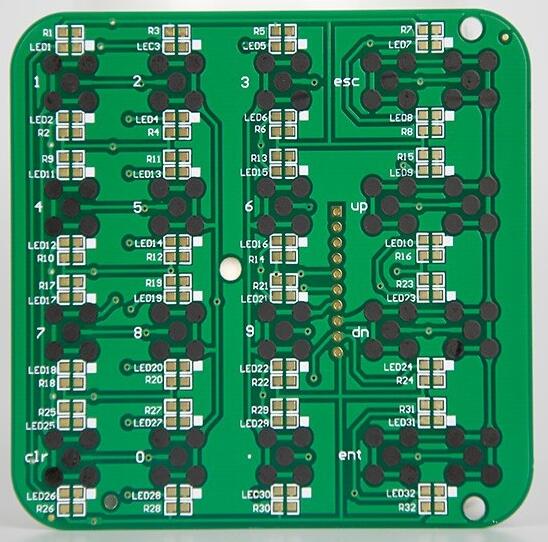In the world of electronics, innovation knows no bounds. The emergence of carbon ink circuit boards has opened up new avenues for design, flexibility, and functionality. This article aims to shed light on carbon ink circuit boards, exploring their definition, benefits, applications, and how they are redefining the landscape of electronic design and manufacturing.
What is a Carbon Ink Circuit Board
Carbon ink circuit boards, also known as conductive ink circuit boards, represent a departure from traditional rigid PCBs. Unlike traditional methods that involve etching copper to create conductive traces, carbon ink circuit boards utilize conductive ink composed of carbon particles. This ink is applied directly onto a substrate, offering unprecedented flexibility and customization in circuit design.
Benefits of Carbon Ink Circuit Boards
- Flexibility and Customization: Carbon ink circuit boards offer a high degree of flexibility, enabling circuitry to be applied to various substrates, including flexible materials. This allows for unconventional shapes and designs that traditional rigid PCBs cannot achieve.
- Rapid Prototyping: The application of conductive ink is simpler and faster than traditional etching processes, making carbon ink circuit boards ideal for rapid prototyping and iterative design.
- Low-Cost Production: The materials and processes involved in carbon ink circuit boards often result in cost savings, particularly for low-volume production runs.
- Lightweight and Thin: Carbon ink circuit boards are thinner and lighter than traditional PCBs, making them suitable for applications where weight and space are critical.
- Intricate Designs: The versatility of carbon ink allows for intricate designs, including printed sensors, antennas, and flexible interconnects.
Applications of Carbon Ink Circuit Boards
- Wearable Electronics: Carbon ink circuit boards are an excellent choice for wearable devices due to their flexibility and lightweight nature. They can conform to the body’s contours, enabling comfortable and unobtrusive wearables.
- Medical Devices: In the medical field, carbon ink circuit boards can be integrated into flexible sensors, patient monitoring devices, and even implantable devices, where flexibility and customization are essential.
- IoT (Internet of Things): The adaptability of carbon ink circuit boards makes them well-suited for IoT applications, where sensors and connectivity are integrated into various objects and environments.
- Consumer Electronics: Carbon ink circuit boards find applications in consumer electronics, including flexible displays, smart packaging, and interactive surfaces.
- Automotive Electronics: The automotive industry benefits from carbon ink circuit boards in applications such as flexible lighting, interior electronics, and sensor integration.
Considerations for Carbon Ink Circuit Boards
While carbon ink circuit boards offer numerous advantages, there are considerations to keep in mind:
- Conductivity: The conductivity of carbon ink is generally lower than that of copper traces, which can affect signal integrity, especially in high-frequency applications.
- Durability: Carbon ink traces may not be as durable as copper traces, particularly in applications subjected to high mechanical stress or extreme environmental conditions.
- Complexity: Complex designs with fine traces or high component density might pose challenges due to the limitations of carbon ink printing processes.
- Manufacturability: Carbon ink circuit boards require specialized equipment and processes, which might limit the number of manufacturers capable of producing them.
Choosing Carbon Ink Circuit Boards
When considering carbon ink circuit boards for your project, several factors come into play:
- Design Complexity: Carbon ink circuit boards are well-suited for applications with moderate design complexity that can benefit from their flexibility and customization.
- Cost and Volume: Carbon ink circuit boards are often cost-effective for low-volume production runs and rapid prototyping.
- Environmental Conditions: Consider the environmental conditions your circuit will be exposed to, as carbon ink traces may not be suitable for extreme conditions.
- Expertise and Manufacturing: Partner with manufacturers experienced in carbon ink circuit board production to ensure successful design and fabrication.
Carbon ink circuit boards represent a groundbreaking leap in electronic design and manufacturing, offering flexibility, customization, and rapid prototyping capabilities that traditional rigid PCBs cannot match. From wearable electronics to medical devices and IoT applications, the versatility of carbon ink circuit boards is shaping the future of electronics across industries. While considerations such as conductivity and durability exist, they can be effectively managed through careful design, expert manufacturing, and a thorough understanding of the technology’s strengths and limitations. As technology continues to evolve, carbon ink circuit boards stand as a testament to the innovation that drives the electronics industry forward.

